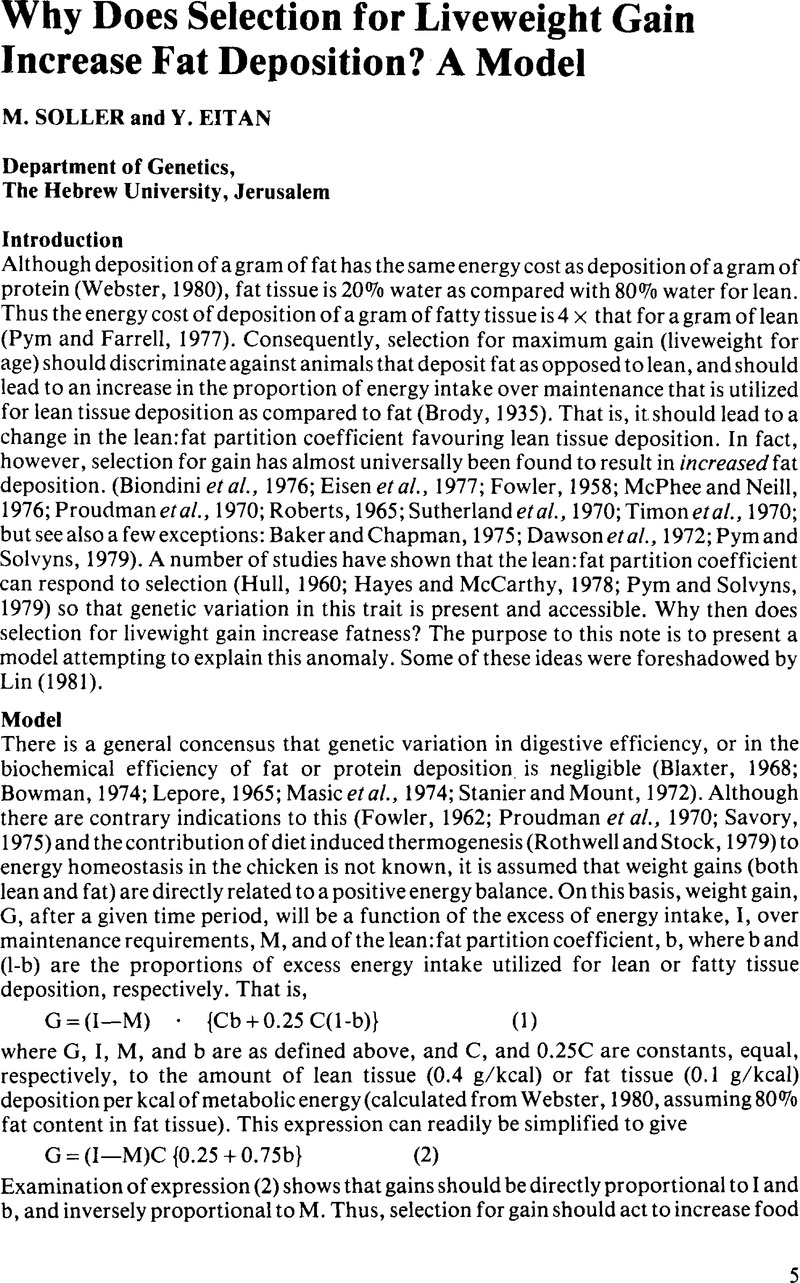Crossref Citations
This article has been cited by the following publications. This list is generated based on data provided by Crossref.
DONALDSON, W.E.
1985.
Lipogenesis and Body Fat in Chicks: Effects of Calorie-Protein Ratio and Dietary Fat.
Poultry Science,
Vol. 64,
Issue. 6,
p.
1199.
RENDEN, J.A.
and
MARPLE, D.N.
1986.
Body Composition and Other Physical Parameters as Determinants of Age at Sexual Maturity and Performance Efficiency in Dwarf Hens Divergently Selected for Body Weight.
Poultry Science,
Vol. 65,
Issue. 8,
p.
1429.
RENDEN, J.A.
1987.
Egg Production Efficiency in Dwarf Lines Selected for High and Low Body Weight as Influenced by Feed Restriction.
Poultry Science,
Vol. 66,
Issue. 7,
p.
1085.
CAHANER, A.
DUNNINGTON, E.A.
JONES, D.E.
CHERRY, J.A.
and
SIEGEL, P.B.
1987.
Evaluation of Two Commercial Broiler Male Lines Differing in Efficiency of Feed Utilization.
Poultry Science,
Vol. 66,
Issue. 7,
p.
1101.
Lilburn, M.S.
1988.
Leanness in Domestic Birds.
p.
387.
BACON, WAYNE L.
NESTOR, KARL E.
and
NABER, EDWARD C.
1989.
Prediction of Carcass Composition of Turkeys by Blood Lipids.
Poultry Science,
Vol. 68,
Issue. 9,
p.
1282.
RENDEN, J.A.
BENOFF, F.H.
WILLIAMS, J.C.
and
BUSHONG, R.D.
1990.
Examination of the Physical Characteristics in a Diverse Group of Dwarf White Leghorn Pullets Before and After First Oviposition.
Poultry Science,
Vol. 69,
Issue. 1,
p.
16.
Attia, F.M.
Alsobayel, A.A.
and
Bayoumi, M.S.
1991.
Performance and production costs of two commercial broiler strains following feed restriction or feeding with dried chick excreta.
Animal Feed Science and Technology,
Vol. 34,
Issue. 1-2,
p.
1.
BOA-AMPONSEM, K.
DUNNINGTON, E.A.
and
SIEGEL, P.B.
1991.
Genotype, Feeding Regimen, and Diet Interactions in Meat Chickens..
Poultry Science,
Vol. 70,
Issue. 4,
p.
680.
Knížetová, H.
Hyánek, J.
Kníže, B.
and
Roubíček, J.
1991.
Analysis of growth curves of fowl. I. Chickens.
British Poultry Science,
Vol. 32,
Issue. 5,
p.
1027.
STAUDINGER, F.B.
RORIE, R.P.
and
ANTHONY, N.B.
1995.
Evaluation of a Noninvasive Technique for Measuring Fat-Free Mass in Poultry.
Poultry Science,
Vol. 74,
Issue. 2,
p.
271.
ANTHONY, N.B.
1998.
A REVIEW OF GENETIC PRACTICES IN POULTRY: EFFORTS TO IMPROVE MEAT QUALITY1.
Journal of Muscle Foods,
Vol. 9,
Issue. 1,
p.
25.
King, R.D.
2001.
Description of a Growth Simulation Model for Predicting the Effect of Diet on Broiler Composition and Growth.
Poultry Science,
Vol. 80,
Issue. 3,
p.
245.
Melot, J. E.
Motter, M. M.
Morao, L. R.
Huguet, M. J.
Canet, Z.
and
Miquel, M.
2003.
Use ofin-vivomeasurements to estimate breast and abdominal fat content of a free-range broiler strain.
Animal Science,
Vol. 77,
Issue. 1,
p.
23.
Eitan, Yoav
and
Soller, Morris
2004.
Evolutionary Theory and Processes: Modern Horizons.
p.
153.
Eitan, Yoav
and
Soller, Morris
2012.
Encyclopedia of Sustainability Science and Technology.
p.
8307.
Williams, C.L.
Tabler, G.T.
and
Watkins, S.E.
2013.
Comparison of broiler flock daily water consumption and water-to-feed ratios for flocks grown in 1991, 2000–2001, and 2010–2011.
Journal of Applied Poultry Research,
Vol. 22,
Issue. 4,
p.
934.
Eitan, Yoav
and
Soller, Morris
2013.
Sustainable Food Production.
p.
1369.
Harford, I.D.
Pavlidis, H.O.
and
Anthony, N.B.
2014.
Divergent selection for muscle color in broilers.
Poultry Science,
Vol. 93,
Issue. 5,
p.
1059.
D`Silva, Avila
and
D`Souza, Cletus J.M.
2015.
Effect of Nonsaponifiable Fraction of Avocado Oil on Body Weight, Body Fat and Blood Lipid Profile of Broiler Chickens.
Asian Journal of Poultry Science,
Vol. 9,
Issue. 3,
p.
144.





